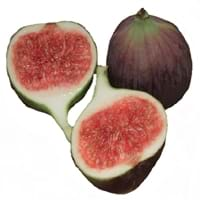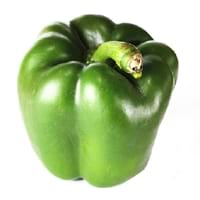Health Benefits
Cancer prevention, Controls blood pressure, Heart care, Increase in haemoglobin, Prevents constipation, Prevents macular degeneration, Reduces nervous tension
Arthritis treatment, Cancer prevention, Heart care
General Benefits
Controls blood pressure, Helps in weight loss, Maintains healthy cholesterol level, Strengthens bones
Anti oxidant properties, Anti-inflammatory properties, Controls blood pressure, Digestive aid, Eye care, Helps in weight loss, Maintains healthy cholesterol level, Strengthens bones
Skin Benefits
Brightens and lightens complexion, Hydrates skin, Skin rejuvenation, Treatment of acne
Anti-aging benefits, Treatment of skin diseases
Hair Benefits
Good conditioner, Regulates hair growth, Softening mask
Prevents hair loss, Promotes longer and healthier hair, Regulates hair growth
Allergy Symptoms
Abdominal pains, Anaphylaxis, Coughing, Headaches, Hives, Itching, Nasal congestion, Skin rash, Sneezing, Sore throat, Swelling of hands
Abdominal pains, Coughing, Eczema, Headaches, Hives, Redness of eyes, Sneezing, Swelling, Swelling of mouth, tongue or lips, Watery eyes, Wheezing
Side Effects
Allergic reaction, Skin rash, Possibly unsafe during pregnancy
Allergic reaction, Mouth irritation, Throat irritation
Best Time to Eat
Best if taken as a breakfast (or empty stomach), Don't consume at night and before bed, Morning time (before lunch)
Along with meal, Don't consume at night and before bed, Don't eat after meal, Morning time (before lunch)
Vitamin B5 (Pantothenic Acid)
Vitamin C (Ascorbic Acid)
Vitamin K (Phyllochinone)
Calories in Fresh Fruit with Peel
Calories in Fresh Fruit without Peel
Not Available
Not Available
Calories in Canned Form
Not Available
Calories in Jam
Not Available
Calories in Pie
Not Available
Type
Tree fruit
Fruit vegetable
Season
Summer, Winter
All seasons
Varieties
Abyad, Adriatic, Alma, Atreano, Bataglia, Black Bethlehem, Black Madeira, Black Mission, Brown Turkey, Sierra, Calimyrna, Kadota, Deanna, Figoin and Hardy Chicago Fig
Big Bertha, Yolo Wonder, Yankee and Fat n Sassy
Color
Green, Purple, Red
Green
Inside Color
Pink
Light Green
Shape
Conical
Irregularly oval
Origin
Western Asia
Central America, Mexico, South America
Soil Type
Clay, Limestone, Loam, Sandy
Loam
Climatic Conditions
Dry, Warm
Warm
Facts about
- Fig tree is considered as a symbol of abundance, fertility and sweetness.
- The fig is made up of 55% of natural sugar so they are the sweetest fruits.
- Figs are used as a fat substitute in recipes.
- Colored bell peppers are sweeter as compared to green bell pepper.
- The inner white colored cavity is rich source of flavonoids and is edible.
- Red bell peppers have more nutrients as compared to green bell peppers.
Top Producer
Turkey
China
Other Countries
Albania, Algeria, Brazil, Egypt, Iran, Morocco, Syria, Tunisia, United States of America
Egypt, Indonesia, Israel, Korea, Mexico, Netherlands, Nigeria, Romania, Spain, Turkey
Top Importer
France
United States of America
Top Exporter
Turkey
Canada
Botanical Name
Ficus carica
Capsicum annuum
Synonym
Not Available
Not Available
Subkingdom
Tracheobionta
Tracheobionta
Division
Magnoliophyta
Magnoliophyta
Class
Magnoliopsida
Magnoliopsida
Subclass
Alismidae
Alismidae
Family
Moraceae
Solanaceae
Species
Ficus carica
C. annum
Generic Group
Mulberry
Not Available
Compare Fig and Green Bell Pepper
It is important compare Fig and Green Bell Pepper as both the fruits have a different nutritional value. Their comparison can be done on the basis of their vitamin and mineral content, calories, benefits as well as characteristics, making it easier for us to choose the best fruit for our diet. Their general health benefits are as follows:
Fig Benefits: controls blood pressure, helps in weight loss, maintains healthy cholesterol level and strengthens bones.
Green Bell Pepper Benefits: anti oxidant properties, anti-inflammatory properties, controls blood pressure, digestive aid, eye care, helps in weight loss, maintains healthy cholesterol level and strengthens bones.
Fruits are also used as a remedy for various hair problems. The hair benefits of Fig are: good conditioner, regulates hair growth and softening mask and hair benefits of Green Bell Pepper are: prevents hair loss, promotes longer and healthier hair and regulates hair growth. Some fruits are known to cause allergic reactions. The allergy symptoms of first fruit are: abdominal pains, anaphylaxis, coughing, headaches, hives, itching, nasal congestion, skin rash, sneezing, sore throat and swelling of hands and the symptoms of second fruit are: abdominal pains, coughing, eczema, headaches, hives, redness of eyes, sneezing, swelling, swelling of mouth, tongue or lips, watery eyes and wheezing. Get sorted Fig vs Green Bell Pepper comparison with the help of fruit comparison tool by fruitvs.com.









